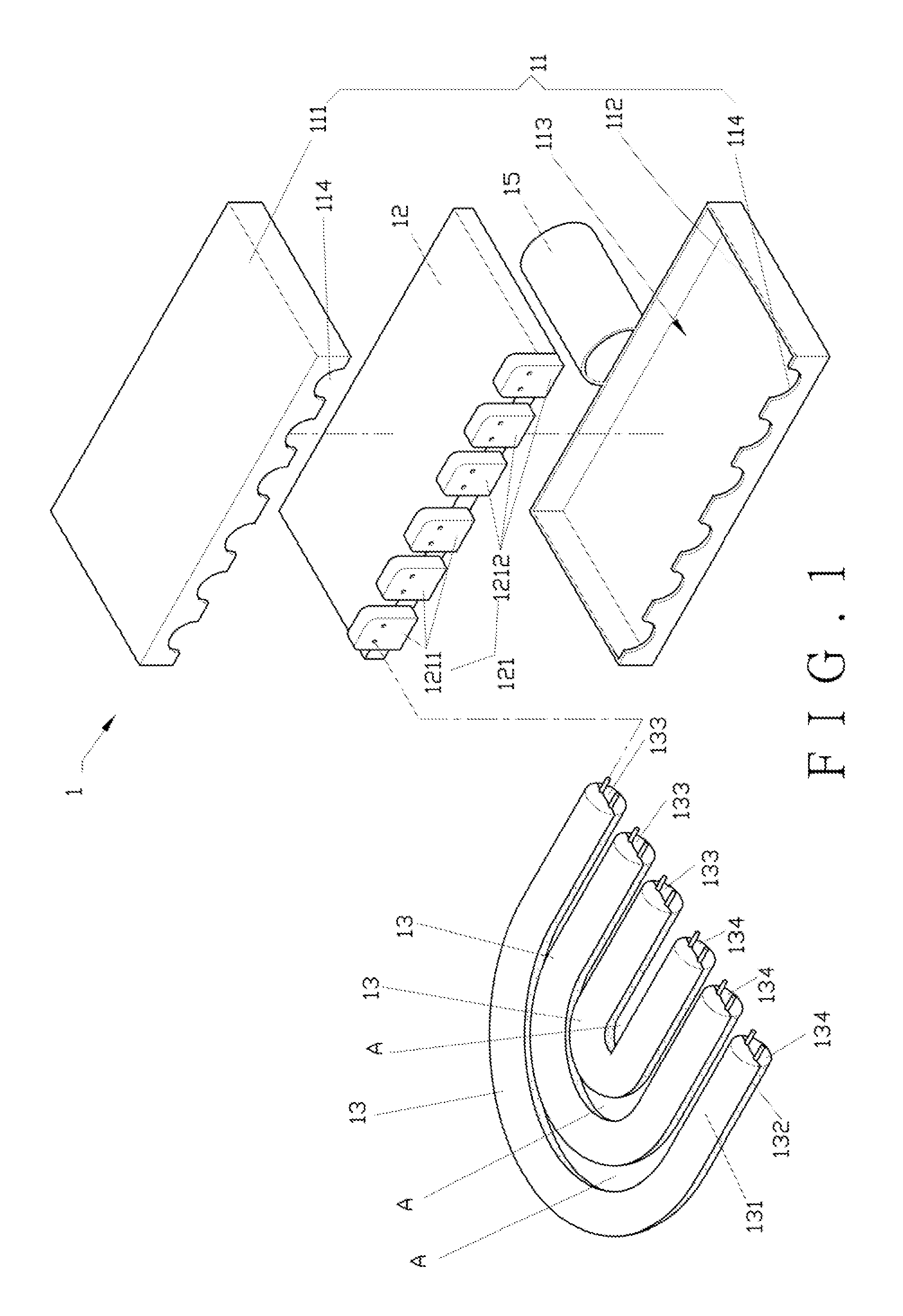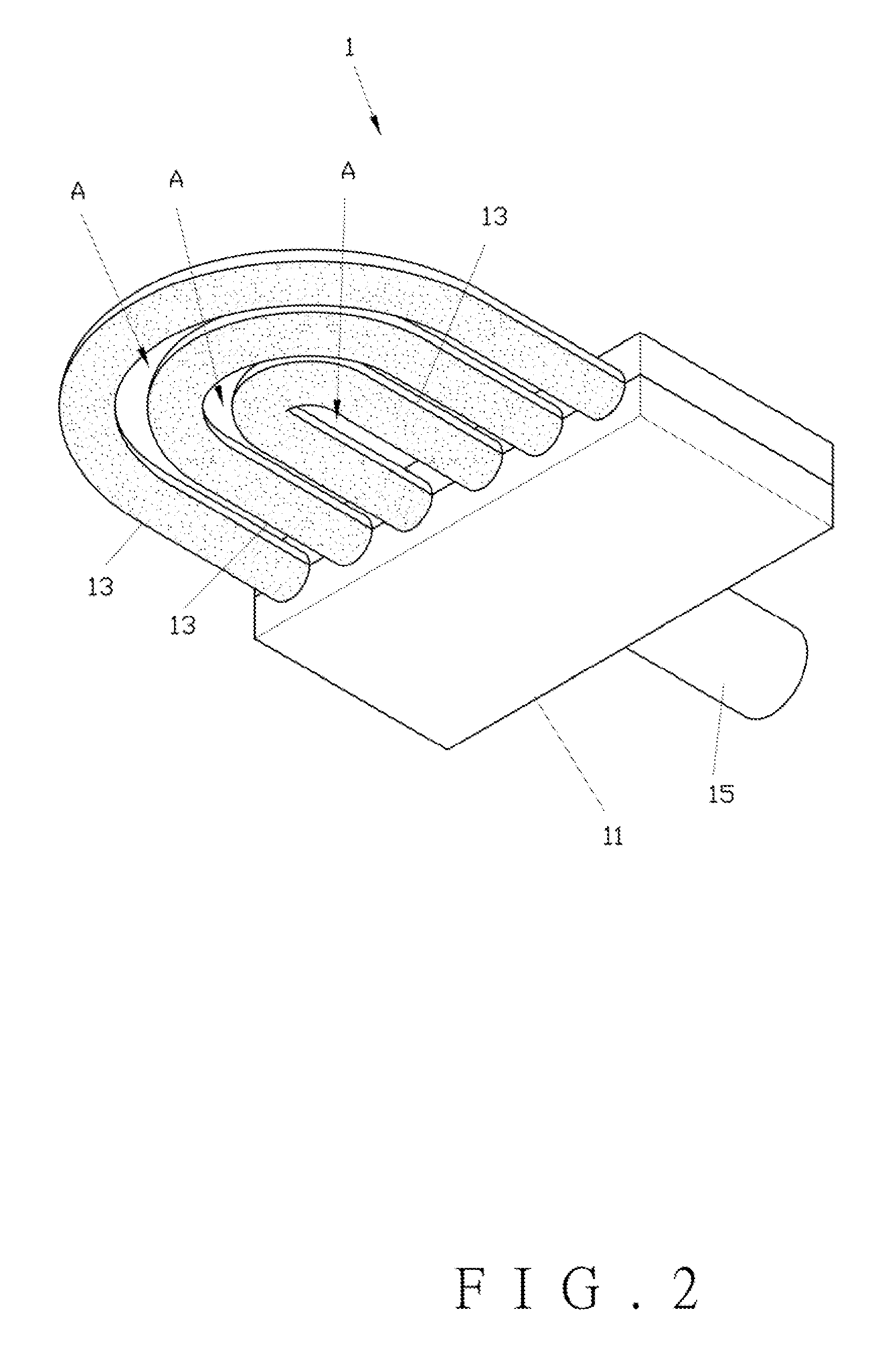Light-emitting diode road lamp structure
a technology of light-emitting diodes and road lamps, which is applied in the direction of fixed installation, lighting and heating equipment, lighting support devices, etc., can solve the problems of bringing about inferior heat-dissipation effect, lamp cannot be smoothly and freely convected, and heat-dissipation problems in the current, so as to reduce working temperature, improve heat-dissipation efficiency, and facilitate air flow
- Summary
- Abstract
- Description
- Claims
- Application Information
AI Technical Summary
Benefits of technology
Problems solved by technology
Method used
Image
Examples
Embodiment Construction
[0042]Referring to FIGS. 1 and 2, the light-emitting diode (LED) road lamp 1 according to a preferred embodiment of the present invention comprises a seat body 11, a circuit unit 12 and a plurality of light-emitting diode (LED) lamp tubes 13.
[0043]The seat body 11 comprises an upper seat body 111, a lower seat body 112 corresponding to the upper seat body 111, an accommodation space 113 defined between the upper seat body 111 and the lower seat body 112, and a plurality of openings 114 communicating with the accommodation space 113. A lamp-post head 15 is connected to one end of the seat body 11 opposite to the openings 114. The lamp-post head 15 is further connected to a lamp post (not shown in drawings).
[0044]The circuit unit 12 is a LED driving circuit component accommodated in the accommodation space 113. The circuit unit 12 comprises at least two sets of conductive terminals 121, and each set of which comprises a first electrode end 1211 and a second electrode end 1212. The fir...
PUM
 Login to View More
Login to View More Abstract
Description
Claims
Application Information
 Login to View More
Login to View More - R&D
- Intellectual Property
- Life Sciences
- Materials
- Tech Scout
- Unparalleled Data Quality
- Higher Quality Content
- 60% Fewer Hallucinations
Browse by: Latest US Patents, China's latest patents, Technical Efficacy Thesaurus, Application Domain, Technology Topic, Popular Technical Reports.
© 2025 PatSnap. All rights reserved.Legal|Privacy policy|Modern Slavery Act Transparency Statement|Sitemap|About US| Contact US: help@patsnap.com



